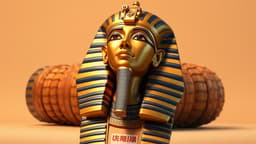Home / Science / King Tut's Necklace: A Tool of Royal Control
King Tut's Necklace: A Tool of Royal Control
21 Nov
Summary
- An ancient necklace fragment reveals rituals reinforcing elite loyalty.
- The artifact depicts King Tutankhamun drinking from a lotus cup.
- Royal gifts, like broad collars, were used to cement allegiance.

A fragment of an ancient necklace, discovered in the UK and depicting King Tutankhamun, has shed light on lost rituals that solidified loyalty among Egyptian elites. This artifact, part of a broad collar, was not merely decorative but served as a calculated tool of royal control.
Researchers suggest that these collars were gifted at elite banquets, symbolizing royal endorsement and divine approval. The imagery on the artifact, including the blue crown and lotus cup, carries potent symbolism of rebirth, fertility, and divine blessing, reinforcing the king's power.
These rituals highlight how Tutankhamun's court used religious prestige and obligation to bind its elites, maintaining Egypt's strict social hierarchy. The necklace fragment thus provides a unique window into ancient Egyptian methods of governance and social control.




